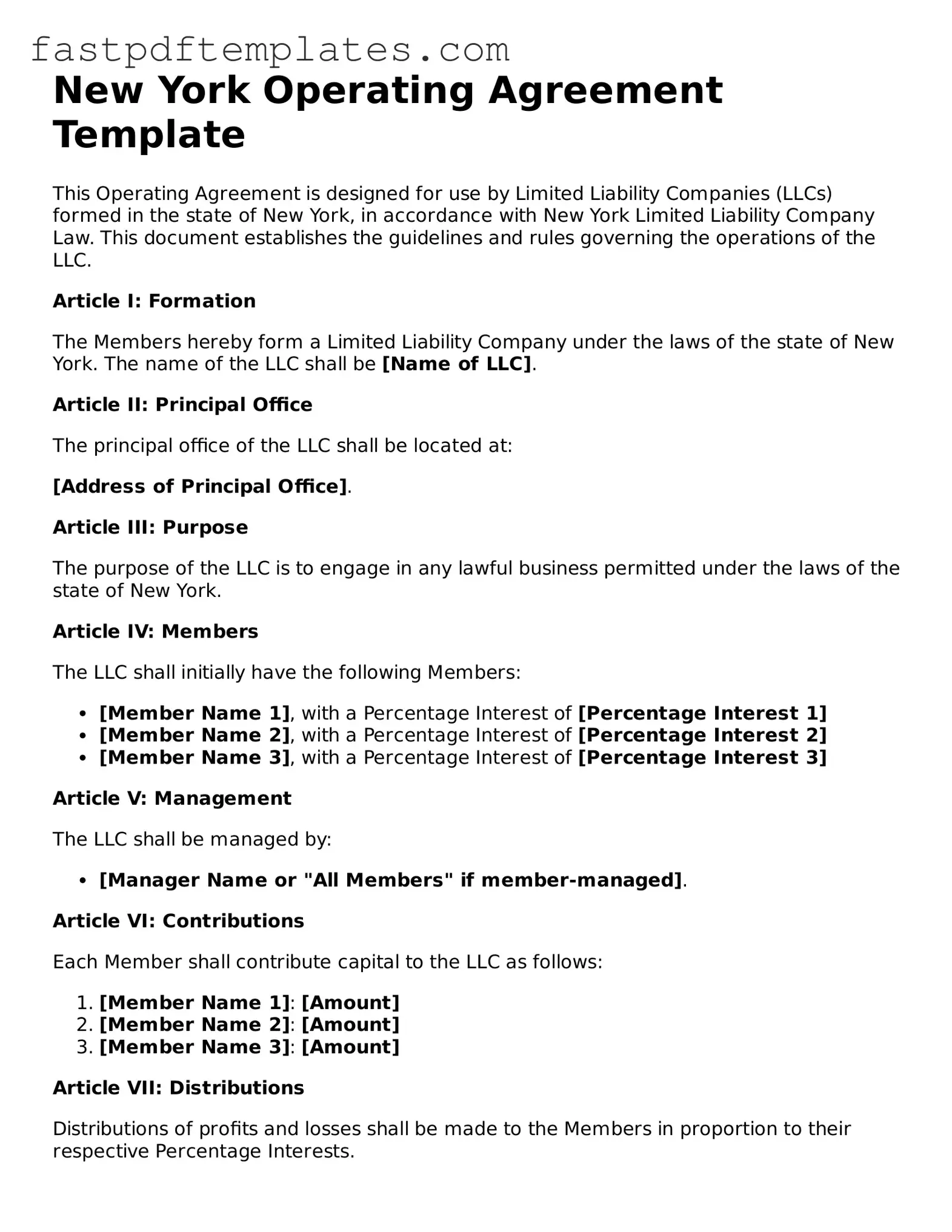New York Operating Agreement Template
This Operating Agreement is designed for use by Limited Liability Companies (LLCs) formed in the state of New York, in accordance with New York Limited Liability Company Law. This document establishes the guidelines and rules governing the operations of the LLC.
Article I: Formation
The Members hereby form a Limited Liability Company under the laws of the state of New York. The name of the LLC shall be [Name of LLC].
Article II: Principal Office
The principal office of the LLC shall be located at:
[Address of Principal Office].
Article III: Purpose
The purpose of the LLC is to engage in any lawful business permitted under the laws of the state of New York.
Article IV: Members
The LLC shall initially have the following Members:
- [Member Name 1], with a Percentage Interest of [Percentage Interest 1]
- [Member Name 2], with a Percentage Interest of [Percentage Interest 2]
- [Member Name 3], with a Percentage Interest of [Percentage Interest 3]
Article V: Management
The LLC shall be managed by:
- [Manager Name or "All Members" if member-managed].
Article VI: Contributions
Each Member shall contribute capital to the LLC as follows:
- [Member Name 1]: [Amount]
- [Member Name 2]: [Amount]
- [Member Name 3]: [Amount]
Article VII: Distributions
Distributions of profits and losses shall be made to the Members in proportion to their respective Percentage Interests.
Article VIII: Indemnification
The Members shall indemnify and hold harmless each other from any claims arising from the conduct of the LLC, to the fullest extent permitted by law.
Article IX: Amendments
This agreement may be amended only with the written consent of all Members.
Article X: Governing Law
This Agreement shall be governed by and construed in accordance with the laws of the state of New York.
IN WITNESS WHEREOF, the Members have executed this Operating Agreement as of the [Date].
_____________________________
[Member Name 1]
_____________________________
[Member Name 2]
_____________________________
[Member Name 3]
This template serves as a starting point for establishing the internal operation of a New York LLC. It allows for customization based on the specific details relevant to the Members involved. It is always advisable to consult with a legal professional to ensure that all aspects of the Operating Agreement meet the unique needs of your LLC and comply with state laws.
